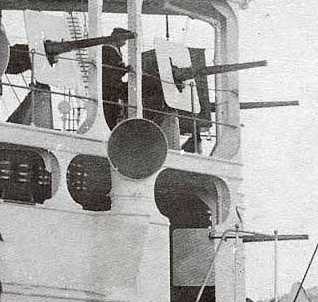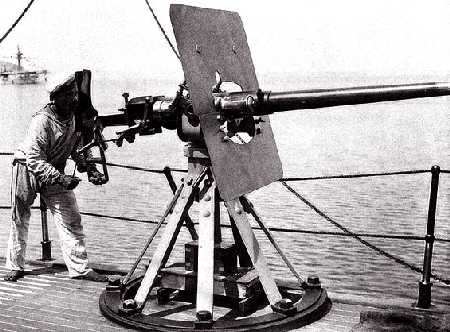|
In addition to the five-barrel weapon, the single barrel 47 mm/1 (1 = single barrel) gun was also purchased. By 1901 about 693 guns of this type were in service. As these single barrel guns were easier to manufacture than the multi-barrel guns, they became standard equipment in the Russian Navy until 1905. In that year, combat during the Russo-Japanese War proved these weapons to be ineffective and they were quickly removed from most of the larger ships. During World War I and the Russian Civil War they were widely used to arm light ships and river craft. A number of them were converted into the AA guns and by 1917 at least 62 guns had been converted. Ten Japanese 47 mm guns were acquired in 1917 and used to arm the Ushakov destroyer class. These guns had monobloc barrels with a vertical blade type breech mechanism. |

Single-barrel 47 mm guns on Retvisan |

Single-barrel 47 mm Hotchkiss gun |

3-pdr. Hotchkiss Gun
|

Hotchkiss five-barrel 3-pdr now in Texas
County, Missouri
|